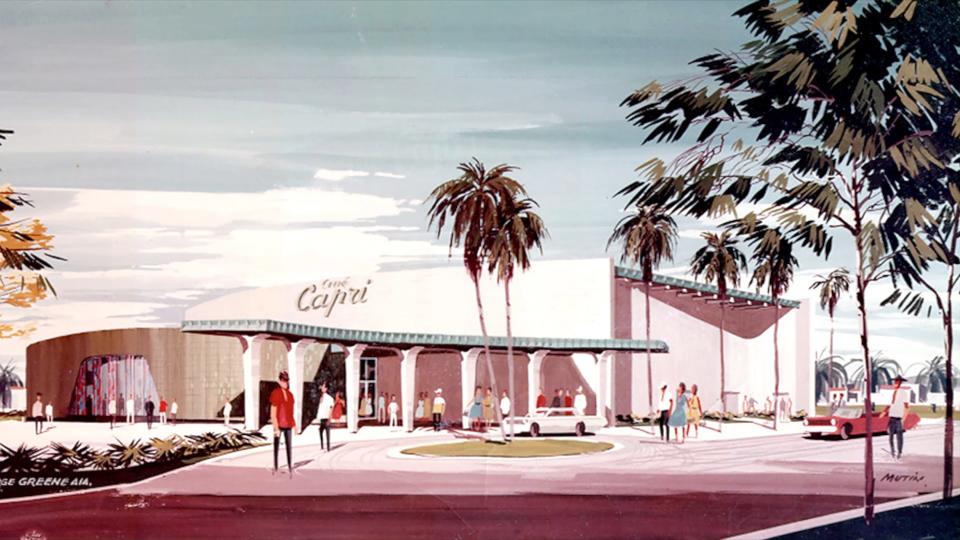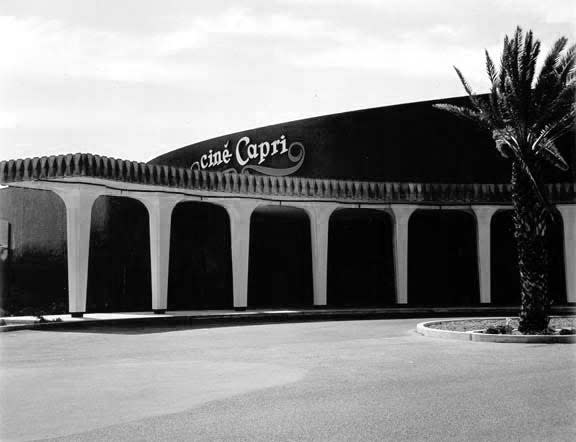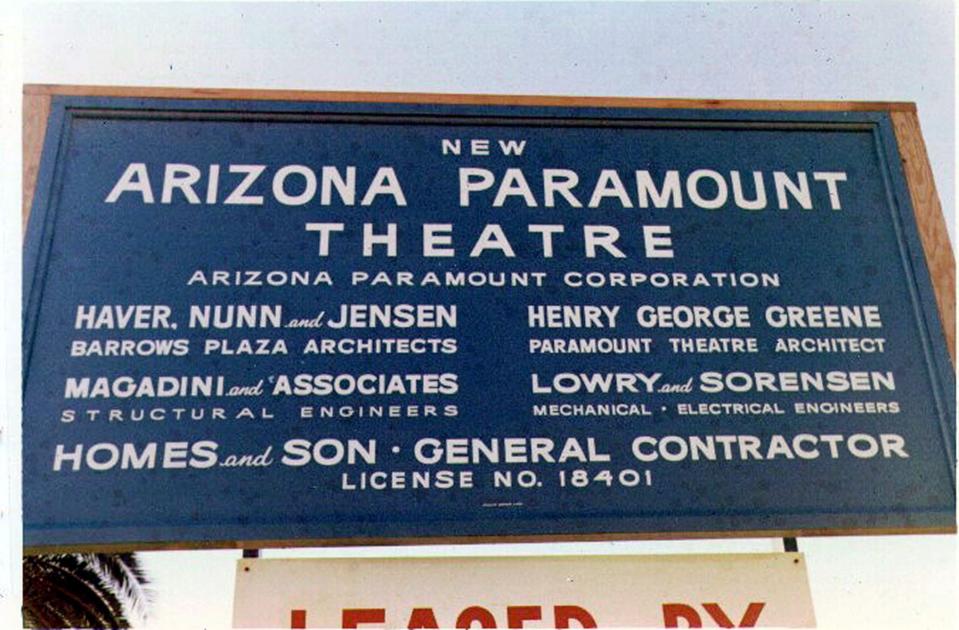How the swanky Cine Capri movie theater honored how Phoenix watched films
When the Cine Capri theater opened in the mid-1960s, going to the movies was a glamorous event.
It was for families, but it was also for lavish decor and a deserved night out. Before the multiplex, one movie a night would be on display.
Works from Ingmar Bergman, Sidney Lumet and Billy Wilder graced the screens. The era of the Hayes Code, a censorship guideline that ruled Hollywood, was coming to an end. Julie Andrews, Sidney Poitier and Gregory Peck were garnishing awards recognition.
It was a high time for films. And here in Phoenix, George M. Aurelius wanted to expand his theater business as that type of theater was going out of style.
Arizona theater history
George Aurelius was the vice president and general manager of Arizona Paramount Corporation. Their company owned three theaters already: Palms Theater, which was across the street from Durants and closed in 1981; the Paramount, which is now the Orpheum in downtown Phoenix; and the Miracle Mile Drive In down in Tucson, which closed in 1978.
They were ready to design a state-of-the-art facility that would blend in well in Uptown Phoenix and also adapt to the changing film distribution style happening at the time. To satisfy antitrust laws of the time, the constructors had to get approval from the Federal District Court of New York before breaking ground.

Cine Capri opens in Phoenix in 1966
The original Cine Capri's grand opening was on Thursday, March 31, 1966, and it was stunning.
"It went back to the movie palace days, where you had big auditoriums, big screens and movies had intermissions. There was a little portico on the east side of the building that was small," says Gayle Martin, daughter of W.E. Bill Holmes Jr., the man who built the theater. "It was a smoking area where people could go out and have a cigarette during intermission."
The 16,500-square-foot building had 10 white sculpted concrete columns extending outside the theater with a copper overhang atop them. The copper was designed so it would achieve an antique green patina over time.
There were hexagonal jade Italian tiles and custom stained glass windows. Palm trees, Russian Olive and Italian Cypress trees, reflective of the desert landscape, surrounded the building. From the second-floor lobby, you could see Camelback Mountain.

"This is when the multiplexes were starting to become a thing so the [Cine] Capri was kind of the last of that era," says Gayle Martin.
A few years after opening, trouble came for the theater, though. Arizona Paramount Corporation got rid of their holdings and pulled out of the community. Ownership of the theater would change hands a few times over the next 30 years, even when it was at its peak.
Harkins Theater takes over Cine Capri
In 1988, Harkins Theater, an Arizona-owned movie theater chain, took over the lease of the Cine Capri. By 1996, plans to demolish the iconic building became public and the public became outraged. A "Save the Cine Capri" movement started in Phoenix drawing in names like television personality Pat McMahon and architect Harold Williams.
This week on Valley 101, a podcast by The Arizona Republic and azcentral.com, we draw back the curtains on the history of the Cine Capri theater, how it adapted in the 2000s and its current status as home to the Phoenix Film Festival.
"I grew up here so getting to do things, even though it's not the original Cine Capri, it still has that feel with the gold drapes and all the pomp and circumstance around it. So that's a really cool appeal for us," says Jason Carney, the executive director of the festival.

Listen to the episode
Listen to Valley 101 on your favorite podcast app or stream the full episode below.
Submit your questions to us about metro Phoenix and Arizona for a chance to be chosen for the podcast.
Note: Valley 101 is intended to be heard, but we offer an AI transcript of the episode script. There may be slight deviations from the podcast audio.
Subscribe to Valley 101 : Apple Podcasts | Spotify | Stitcher
Follow Valley 101 and all azcentral podcasts on X, formerly Twitter and on Instagram.
Reach the reporter at [email protected]. Follow her on X, formerly Twitter: @amandaluberto.
Catch up on past episodes of Valley 101:
This article originally appeared on Arizona Republic: How iconic Phoenix movie theater Cine Capri changed the city
